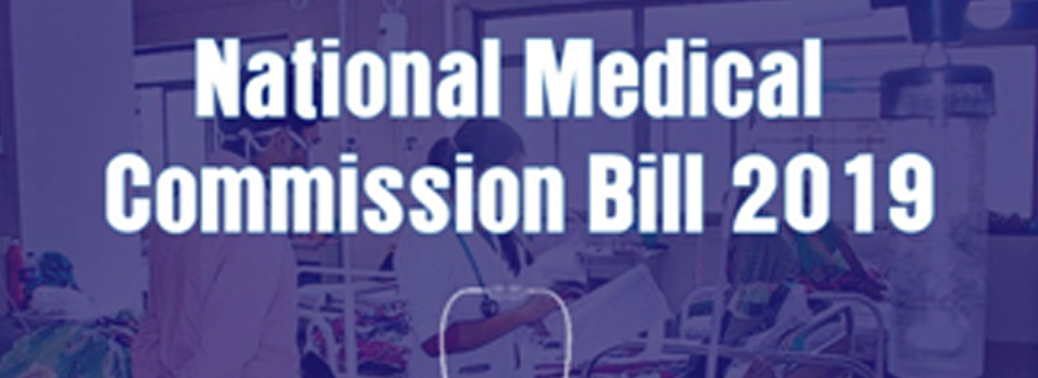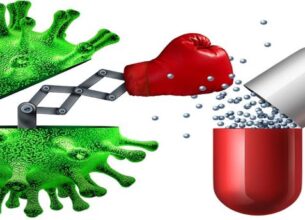NATIONAL MEDICAL COMMISSION
30, Jul 2019

Prelims level : Governance- Regulatory Bodies
Mains level : GS-II- Issues relating to development and management of Social Sector or Services relating to Health, Education, Human Resources.
GS-II- Statutory, regulatory and various quasi-judicial bodies.
GS-II- Statutory, regulatory and various quasi-judicial bodies.
- Context- Doctors and medical students under the Indian Medical Association (IMA) held a protest march
Why National Medical Commission Bill?
- The Bill seeks to repeal the Indian Medical Council Act, 1956 and provide for a medical education system which ensures:
1. Availability of adequate and high-quality medical professionals,
2. Adoption of the latest medical research by medical professionals,
3. Periodic assessment of medical institutions, and
4. An effective grievance redressal mechanism.
- IMC had failed to keep pace with time and various bottlenecks had crept into the system with serious detrimental effects on medical education and, by implication, on delivery of quality health services.
Highlights of the Bill:
Constitution of the National Medical Commission:
- The Bill sets up the National Medical Commission (NMC).
- Establish State Medical Councils at the state level.
- The NMC will consist of 25 members, appointed by the central government.
- Members of the NMC will include:
1. The Chairperson (must be a medical practitioner),
2. Presidents of the Under-Graduate and Post-Graduate Medical Education Boards,
3. The Director General of Health Services, Directorate General of Health Services,
4. The Director General, Indian Council of Medical Research, and
5. Five members (part-time) to be elected by the registered medical practitioners from amongst themselves from states and union territories for a period of two years.
Functions of the National Medical Commission:
- Framing policies for regulating medical institutions and medical professionals
- Assessing the requirements of healthcare related human resources and infrastructure,
- Ensuring compliance by the State Medical Councils of the regulations made under the Bill,
- Framing guidelines for determination of fees for up to 50% of the seats in private medical institutions and deemed universities which are regulated under the Bill.
Autonomous Boards:
- The Bill sets up autonomous boards under the supervision of the NMC.
- Each autonomous board will consist of a President and four members, appointed by the central government.
- These boards are: The Under-Graduate Medical Education Board (UGMEB) and the Post-Graduate Medical Education Board (PGMEB):
- These Boards will be responsible for formulating standards, curriculum, guidelines, and granting recognition to medical qualifications at the undergraduate and post graduate levels respectively.
- The Medical Assessment and Rating Board (MARB): MARB will have the power to levy monetary penalties on medical institutions which fail to maintain the minimum standards as laid down by the UGMEB and PGMEB.
Community Health Providers (CHP):
- NMC may grant a limited license to certain mid-level practitioners connected with the modern medical profession to practice medicine.
- These mid-level practitioners may prescribe specified medicines in primary and preventive healthcare.
- In any other cases, these practitioners may only prescribe medicines under the supervision of a registered medical practitioner.
Entrance Examinations:
- There will be a uniform National Eligibility-cum-Entrance Test for admission to under-graduate and post-graduate super-speciality medical education in all medical institutions regulated under the Bill.The NMC will specify the manner of conducting common counselling for admission in all such medical institutions.
National Exit Test:
- The Bill proposes a common final year undergraduate examination called the National Exit Test for the students graduating from medical institutions to obtain the license for practice. This test will also serve as the basis for admission into post-graduate courses at medical institutions under this Bill.
Concerns:
- Indian Medical Association (IMA) – the apex body representing the medical fraternity in India.The first concern is over the CHPs being allowed to practice modern medicine. The Bill does not define who they are or what qualifications they hold and yet they are to be given licenses to the extent of one-third of the total number of licensed medical practitioners in India.
- The IMA’s second major objection is to the proposed National Exit Test (NEXT) for giving both licenses for practice (to those who have already cleared the MBBS exam) as well as for admission to post-graduate “broad-speciality courses”.
- The bill takes away the voting right of every doctor in India to elect their medical council.









